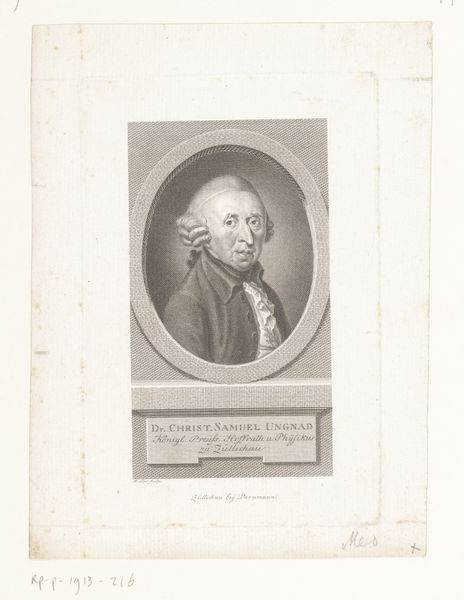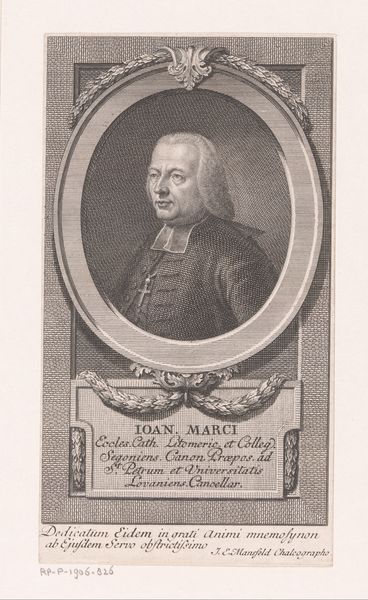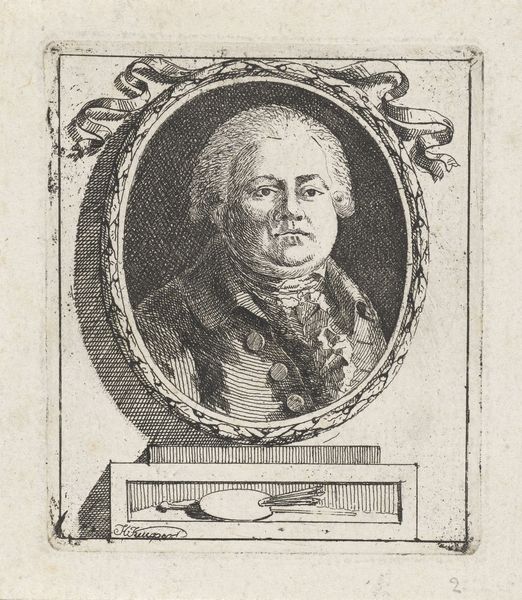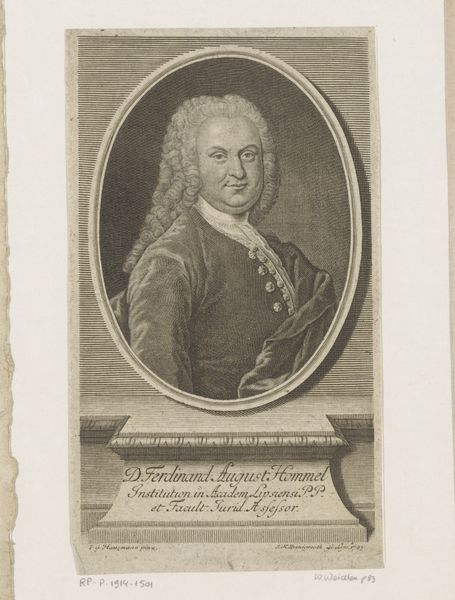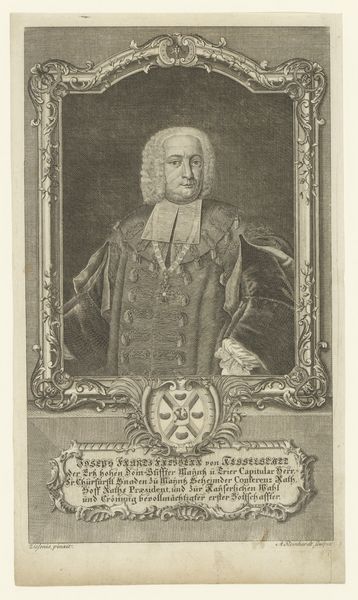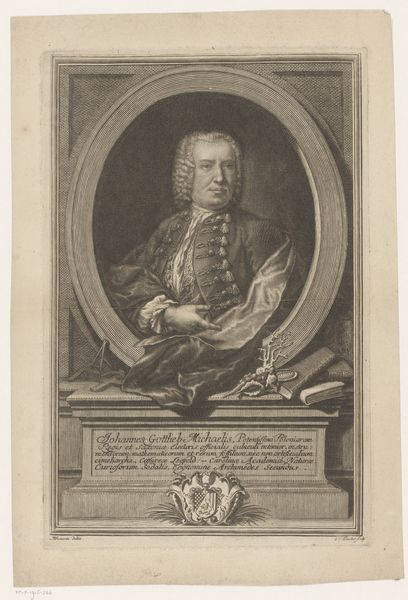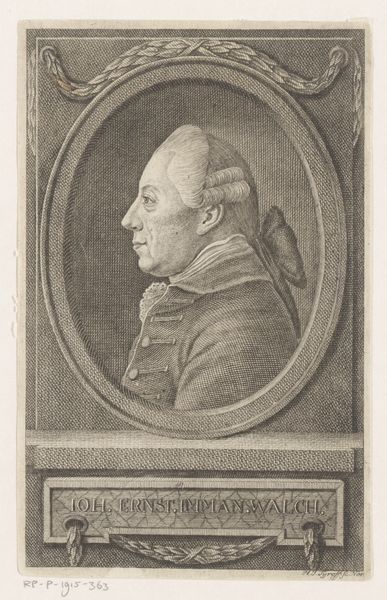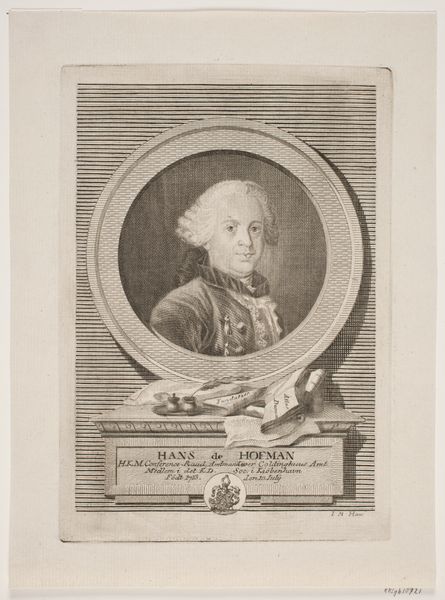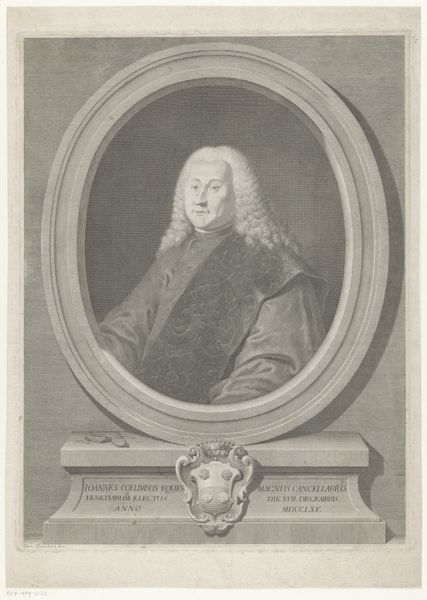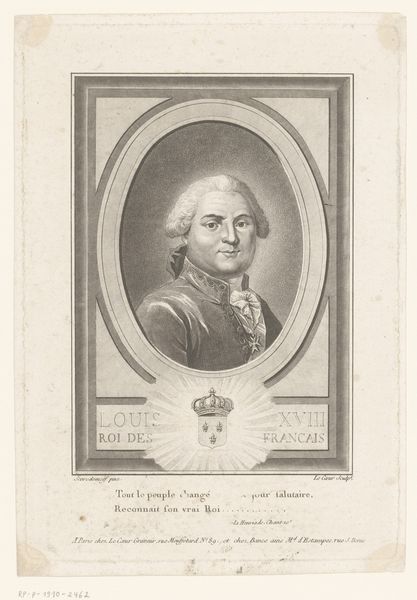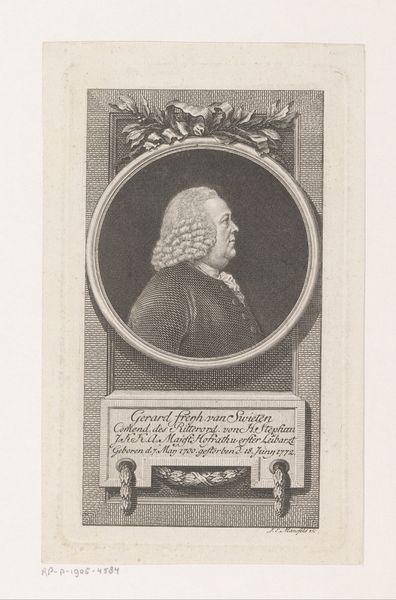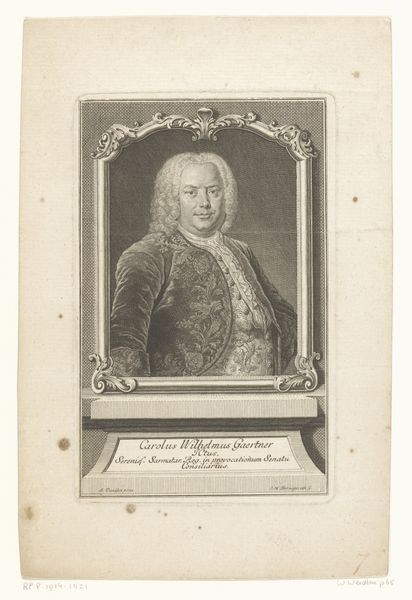
drawing, engraving
#
portrait
#
drawing
#
baroque
#
old engraving style
#
historical photography
#
history-painting
#
academic-art
#
engraving
Dimensions: height 172 mm, width 117 mm
Copyright: Rijks Museum: Open Domain
Editor: This is "Portrait of Hans Conrad Fuessli," a drawing, or more accurately an engraving, from sometime between 1710 and 1781 by Georg Lichtensteger, currently held in the Rijksmuseum. It has such a formal and posed feeling, almost like a document. What jumps out at you when you look at it? Curator: It strikes me as a very deliberate construction of identity through visual representation. Engravings like this were often commissioned to project a certain image of the sitter to a wider public. We need to consider who Hans Conrad Fuessli was, and what message this image was intended to convey about him within the social and intellectual context of his time. Editor: So it's less about capturing a likeness and more about crafting a persona? Curator: Precisely. Note the oval frame, the Latin inscription, and the accoutrements of learning – the books. The sitter is shown in the act of writing, suggesting intellect and scholarship. Lichtensteger isn’t just creating a portrait; he's constructing a representation of Fuessli as an important figure in his community. This was a strategic deployment of imagery. Editor: Do you think the clothing, especially that uniform-like jacket, had a particular significance at the time? Curator: Absolutely. Dress served as a potent signifier of status, profession, and allegiance. While I can't identify the specific uniform, it clearly communicates authority and membership within a particular social structure. The meticulous detail afforded to the garments versus other aspects, tells us that costuming was significant in defining the subject's identity. Editor: That’s fascinating. I initially saw it as just a historical portrait, but understanding its intended purpose and social context really opens it up. Curator: Exactly! And that's the power of historical analysis – to understand not just what we see, but why it was made and what it meant in its own time, as well as how those meanings change over time in institutions such as the Rijksmuseum.
Comments
No comments
Be the first to comment and join the conversation on the ultimate creative platform.
